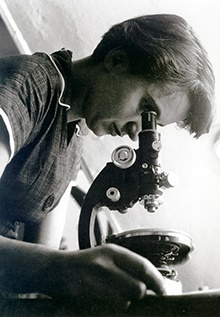Rosalind Franklin

When Rosalind Franklin took her Photo 51 in 1952, the first photo of DNA, she had no idea that she would become the center of a scientific controversy and breakthrough. The British chemist and accomplished X-ray crystallographer’s image was shared without her permission with James Watson and Francis Crick, who were working on identifying the structure of DNA. Franklin’s picture allowed them to deduce that DNA took the form of a double helix; however, in their paper about the discovery, they only mentioned Franklin in a footnote. While Watson, Crick and Maurice Wilkins received the Nobel Prize in 1962 for their contributions to science, Franklin had passed away due to cancer four years prior at the age of 37 and was not eligible for the award. Given how frequently Franklin’s contributions to unlocking the secrets of DNA are overlooked, especially in schools, her story remains one of the most famous and egregious examples of a female scientist being denied credit for her work due to sexism.

So this post is dedicated to one of the most important people in science and medicine. Franklin was born on July 25, 1920, in London, to a wealthy Jewish family who valued education and public service. At age 18, she enrolled in Newnham Women’s College at Cambridge University, where she studied physics and chemistry. In 1946, Franklin moved to Paris where she perfected her skills in X-ray crystallography, which would become her life’s work. She was an intrepid traveler and avid hiker but she also enjoyed spirited discussions about science and politics. Everyone considered Franklin a brilliant scientist and a kindhearted woman. However, she could also be short-tempered and stubborn, and some fellow scientists found working with her to be a challenge. Among them was Maurice Wilkins. The two were working together on finding the structure of DNA, but their conflicts led to them working in relative isolation. Unknown to Franklin, Wilkins showed Watson and Crick some of her unpublished data, including the X-ray diffraction picture of a DNA molecule, which was Watson’s inspiration and Watson and Crick created their famous DNA model. Franklin’s contribution was not acknowledged, but after her death Crick said that her contribution had been critical.
Let’s remember her forever and make sure this mistake is not repeated in the future for women in any field.

